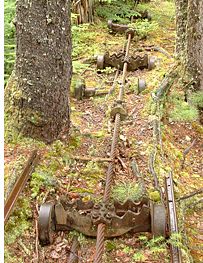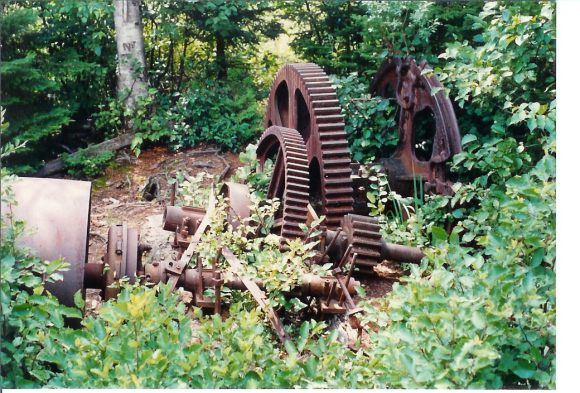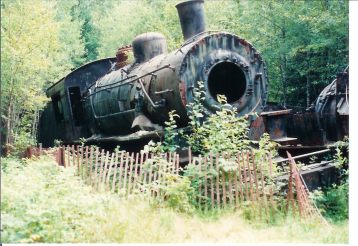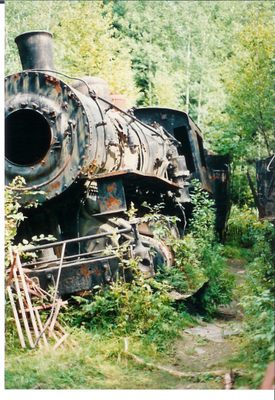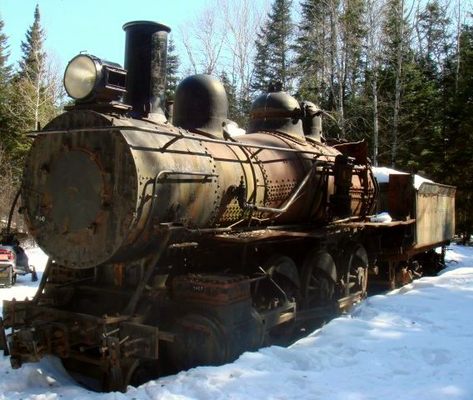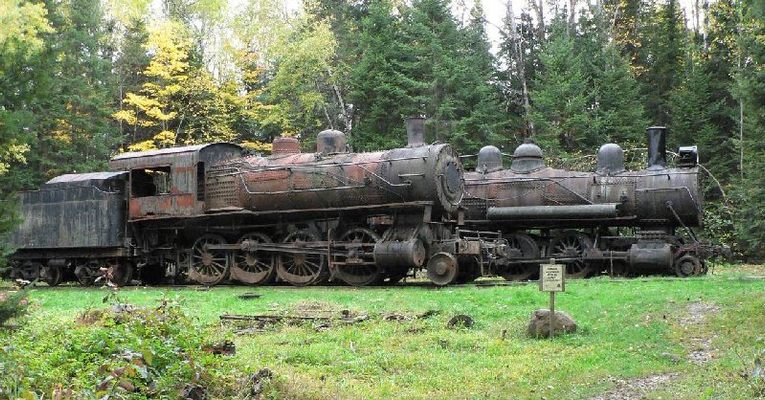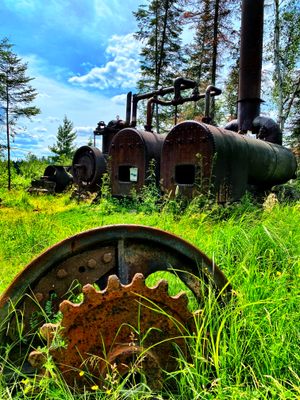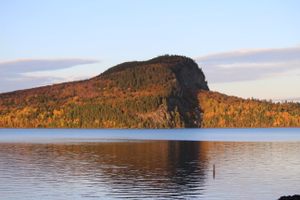About
Stumbling across evidence of civilization amidst nature can be quite confusing. Indeed, in the upcountry backwoods of Maine, there remains clear track, fit to carry tons of material, and rusted iron hulks of those mechanical giants—locomotive engines. But this railway and its long-extinct machinery—dwelling deep in the Maine woods—are remnants of a once-genius system.
At the turn of the century northern Maine was a hub of the logging industry. Between Eagle Lake and Chamberlain Lake, though, the rivers did not flow in the right direction. Rather than ferry timber down the river to the larger Chamberlain Lake, from which they could be sent to larger ports, the engineers devised another, much more ingenious system.
In the winter of 1901, massive mechanical parts were hauled north to construct the Eagle Lake Tramway. Using steam power, the tramway circulated 6,000 feet of cable-hauled steel trucks loaded with lumber through the Maine forest. When the tramway arrived at lower lake, the lumber was unloaded, and the cable with the empty trucks looped to a lower track and circled back to its origin, trundling through the Maine trees. However, by 1909, the forest had been cut down, and the paper industry had moved on. The tramway was left where it lay, to slowly fall apart and be absorbed into the Maine forest.
While much of the tramway has disintegrated or been carried off by someone in need of a part, remains of the steam engines still litter the forest floor and the tracks can still be seen in the woods of rural Maine. The Tramway is on the National Register of Historic Places.
Related Tags
Community Contributors
Added By
Published
September 30, 2009
